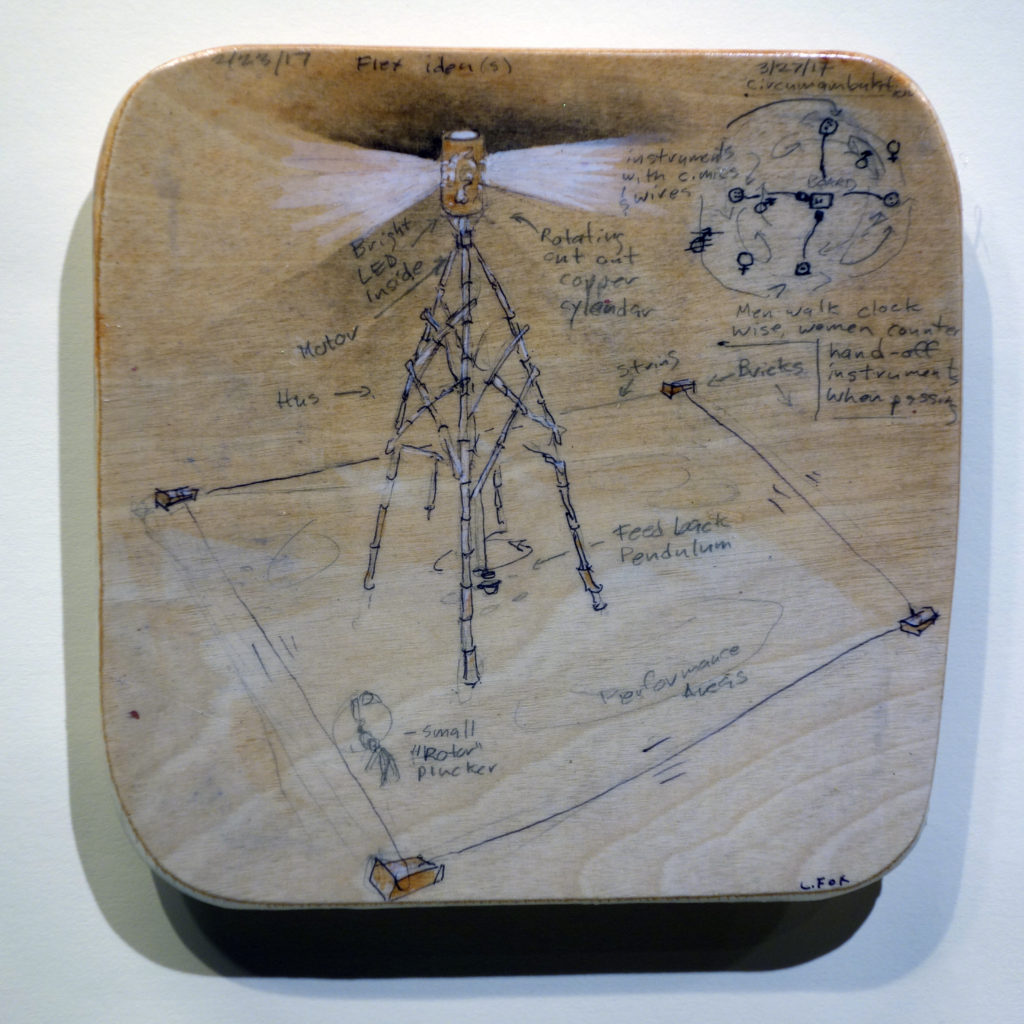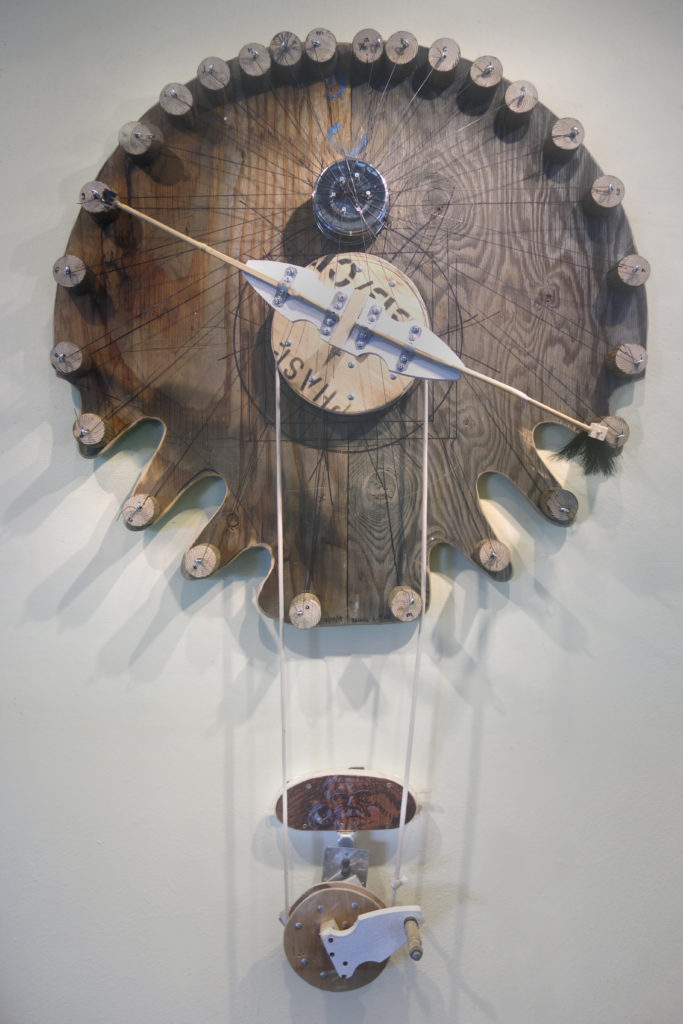

Atrium Display: Leonardo at 500; Homage and Excuse by Larnie Fox
Homage
Leonardo da Vinci was an early holistic scientific thinker. He didn’t recognize the boundaries between art and science. He didn’t recognize the boundaries between scientific disciplines. Quite the contrary, he brought everything he knew to bear on every problem he dealt with ~ and he dealt with many problems in many fields.
As Fritjof Capra points out in his book The Science of Leonardo, Leonardo’s science was synthetic as opposed to analytic. Our culture’s left-brained science ~ and general view of the world ~ looks at our environs and ourselves as mechanisms that can be broken down into their component parts and thus comprehended. What this world view does not take into account is that by splitting living systems into component parts, the systems are then killed, or made available for killing in order to understand and then utilize them. We see the tragic results of this kind of reductionist thinking manifested in our world in too many ways. Leonardo’s holistic view of the world represents an antidote to that kind of reductive thinking. It is unfortunate that he and his heirs made small efforts to publish his work. Had they done so, his influence may well have eclipsed that of Galileo and Newton.
There are lessons to be drawn from Leonardo’s work that are increasingly relevant today: There are deep connections between them microcosm and the macrocosm. The earth, and likely the cosmos is a living system. Rigorously following one’s own interests and inclinations may be more productive than falling in line with the demands of the hierarchy. Rational and spiritual thought are not mutually exclusive. Close observation, unbiased investigation and radical curiosity may save us.
Excuse
Two and a half years ago curator David Samas flattered me by asking if I would like to do a show on the occasion of the 500th anniversary of Leonardo’s death (May 2, 2019). I think he asked me because he’d seen some studies for ornithopters and other contraptions that I had made in my notebooks, slightly reminiscent of Leonardo‘s. He also knew that, like Leonardo, I designed musical instruments.
Around the same time, my wife Bodil and I were honored with a residency at the Montalvo Arts Center. When we were there, I began re-evaluating the studies, sketches, and ideas in my notebooks. I began seeing them as art, not just as a preparation for art making. I noticed a qualitative difference in studies for projects, as opposed to renderings of the projects after the fact. The studies were much fresher and authentic. In order to make them more solid, more like “real art“, I begin keeping my notes on wooden panels supplied by Ruszel Woodworks. (Thanks Jack!). Later I collaged actual notebook pages onto wooden panels after copying them for replacement in my notebooks. I also started doing studies on larger panels, like my Artist’s Coffee Table. I began to use such panels to build new instruments or sculptures, or other items, such as toilet paper roll holders.
In spite of the fact that I lack a significant percentage of the the master’s skills, intelligence and energy I still identify with him. Like Leonardo I keep notebooks, paint, make sculptures, design musical instruments, have an interest in spiritual geometry, leave many projects unfinished, don’t recognize the boundaries between art and science, don’t like being told what to do, skip from medium to medium, and while I’m working on one project my mind is often elsewhere.
For the past couple of years I have used this upcoming show as an excuse to immerse myself in the master’s history and work. I spent time in the library, I read books, I looked at tons of images and stood in front of some of his best work at the Louvre. I looked at my notebooks and studies in a new light. I encouraged my own curiosity.
I hope this exhibition encourages your curiosity.
Larnie Fox
3/31/19
Larnie Fox is a visual and sound artist known for monumental bamboo sculpture, sound installations, performances and painting. His kinetic/sound sculptures and new instruments have been shown in numerous one-person and group shows and performances in the SF Bay Area and nationally. He is a founding member of 23five, a non-profit to promote sound art, directed the Crank Ensemble who performed on hand-cranked instruments he built, and currently is performing with the new music group Contraption Quartet. He holds an MFA in Painting from the University of Utah and is the former Executive Director of Arts Benicia and former Director of the Children’s Fine Art Program at the Palo Alto Art Center. He lives, works and collaborates with his wife Bodil in Benicia.